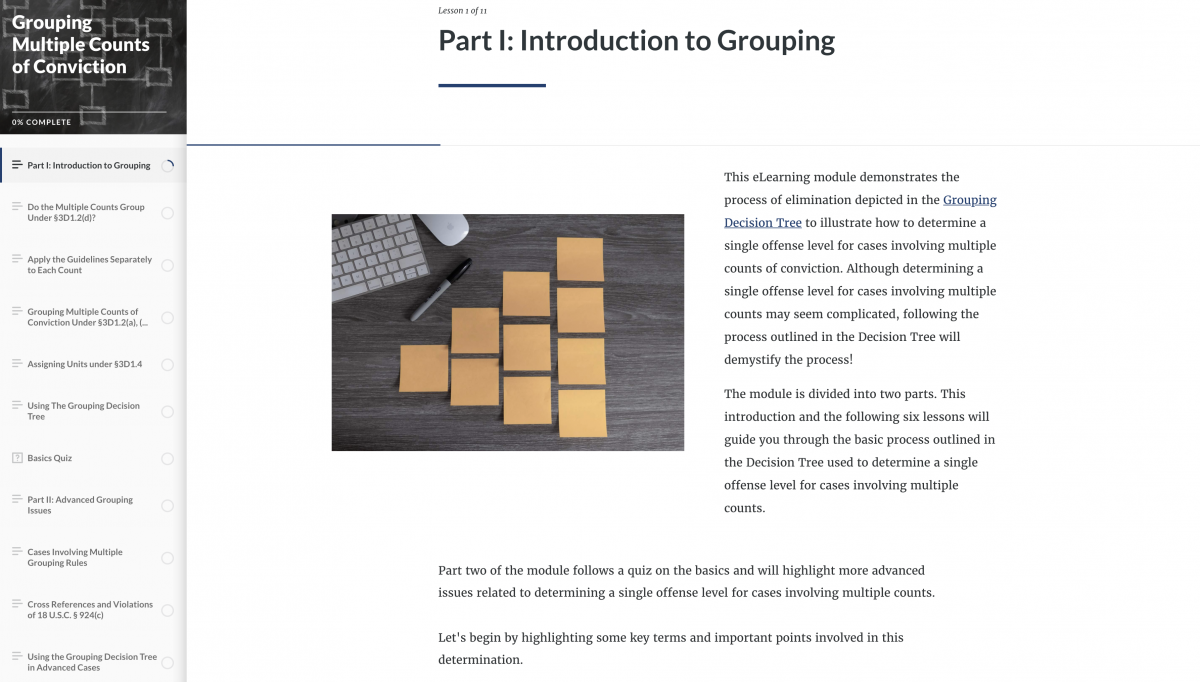Summary
(August 2020) This eLearning module demonstrates application of the grouping rules following the process outlined in this Decision Tree.
Learning Objectives
By the end of this module, you will be able to:
- Use the Grouping Decision Tree to determine a single offense level for a case involving multiple counts of conviction;
- Define the criteria for applying the four grouping rules in §3D1.2;
- Identify the difference between grouping multiple counts of conviction under §3D1.2(d) and grouping multiple counts under §3D1.2(a), (b), and (c);
- Describe the process of assigning units under §3D1.4;
- Distinguish between "grouping" multiple counts of conviction under §3D1.2 and the "assignment of units" to multiple counts of conviction under §3D1.4;
- Apply the multiple counts rules under Chapter Three, Part D to real-world scenarios; and
- Determine a single offense level for real-world scenarios involving multiple counts of conviction.
In order to complete the exercises in this course, you will need a copy of the Guidelines Manual.

